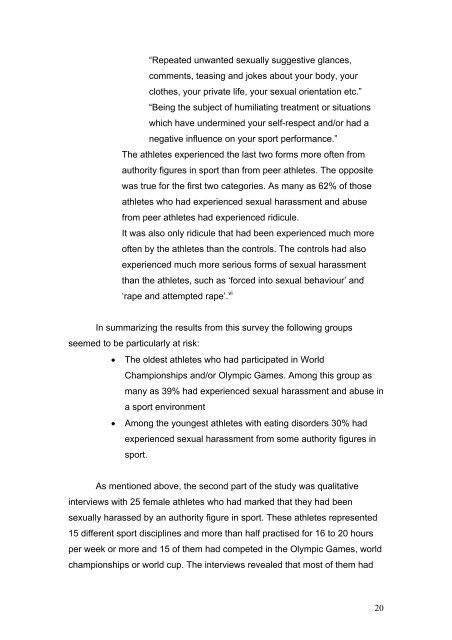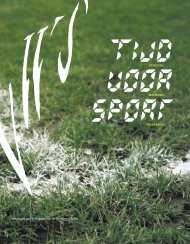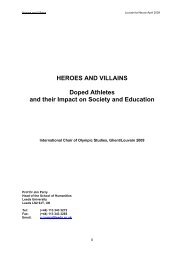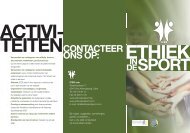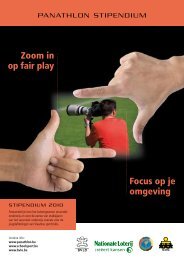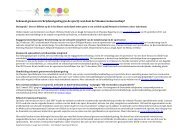Part 3 GLOBAL ISSUES: HARASSMENT AND ABUSE RESEARCH
Part 3 GLOBAL ISSUES: HARASSMENT AND ABUSE RESEARCH
Part 3 GLOBAL ISSUES: HARASSMENT AND ABUSE RESEARCH
Create successful ePaper yourself
Turn your PDF publications into a flip-book with our unique Google optimized e-Paper software.
“Repeated unwanted sexually suggestive glances,<br />
comments, teasing and jokes about your body, your<br />
clothes, your private life, your sexual orientation etc.”<br />
“Being the subject of humiliating treatment or situations<br />
which have undermined your self-respect and/or had a<br />
negative influence on your sport performance.”<br />
The athletes experienced the last two forms more often from<br />
authority figures in sport than from peer athletes. The opposite<br />
was true for the first two categories. As many as 62% of those<br />
athletes who had experienced sexual harassment and abuse<br />
from peer athletes had experienced ridicule.<br />
It was also only ridicule that had been experienced much more<br />
often by the athletes than the controls. The controls had also<br />
experienced much more serious forms of sexual harassment<br />
than the athletes, such as ‘forced into sexual behaviour’ and<br />
‘rape and attempted rape’. vi<br />
In summarizing the results from this survey the following groups<br />
seemed to be particularly at risk:<br />
The oldest athletes who had participated in World<br />
Championships and/or Olympic Games. Among this group as<br />
many as 39% had experienced sexual harassment and abuse in<br />
a sport environment<br />
Among the youngest athletes with eating disorders 30% had<br />
experienced sexual harassment from some authority figures in<br />
sport.<br />
As mentioned above, the second part of the study was qualitative<br />
interviews with 25 female athletes who had marked that they had been<br />
sexually harassed by an authority figure in sport. These athletes represented<br />
15 different sport disciplines and more than half practised for 16 to 20 hours<br />
per week or more and 15 of them had competed in the Olympic Games, world<br />
championships or world cup. The interviews revealed that most of them had<br />
20


